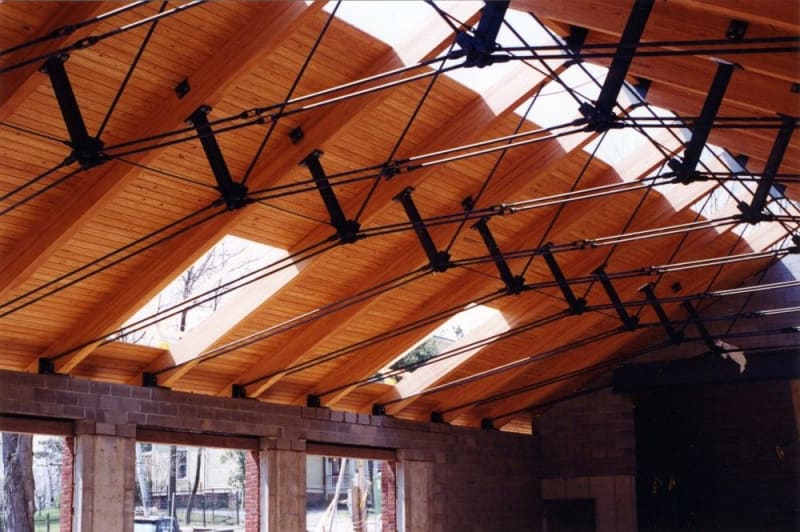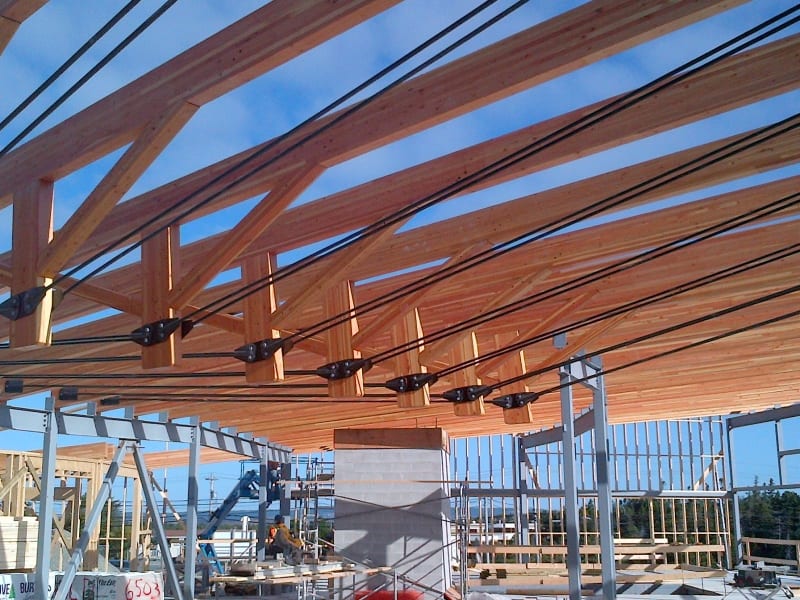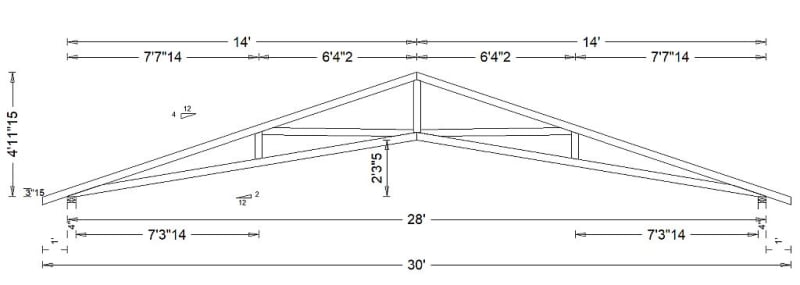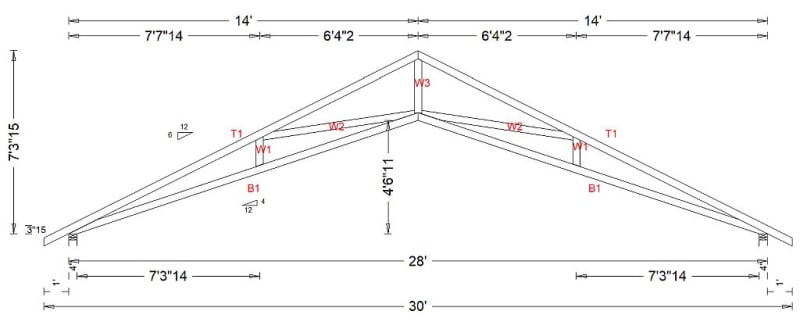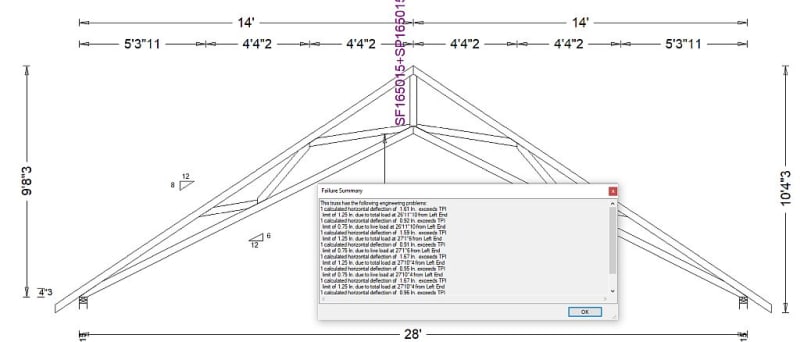-
2
- #1
RontheRedneck
Specifier/Regulator
I thought this subject might interest some of you, and it was worthy of a new thread.
I often get people thinking that if there’s a 2/12 difference between the TC and BC pitches of a scissor truss that a truss will work. That's not always true.
The first issue is geometry. A 4/12 pitch is an angle of 18.4° and a 2/12 pitch is 9.5°. The difference between the two pitches is 8.9°.
A 10/12 pitch is an angle of 39.8° and an 8/12 pitch is 33.7°. The difference between the two pitches is 6.1°.
So as the pitches get steeper, the relative angle between the two chords is reduced. A shallower angle obviously means higher forces. A truss may not work because of that.
The 2nd problem is the limitation of the component saws that cut the lumber for the trusses. Once you get below an angle of 9° or so the saws start to have trouble making the cuts. (The limitations vary with the brand and type of saw)
The 3rd issue is horizontal deflection. With steeper pitches you start getting more of it. We're limited to a max of 1.25".
If you're looking at a short truss span - Let's say 20' or so - You can push the limits more. But the longer the span gets the more horizontal deflection you get.
The overall height can also become an issue. We can build trusses up to about 13' 2" tall.
If a flat BC truss exceeds that height we can piggyback it. But with scissor trusses piggybacks are more problematic. Sometimes of the BC pitch is steep there just isn't enough depth to piggyback a truss without the chords failing.
Hopefully that makes sense. If not let me know and I'll take another run at it.
I often get people thinking that if there’s a 2/12 difference between the TC and BC pitches of a scissor truss that a truss will work. That's not always true.
The first issue is geometry. A 4/12 pitch is an angle of 18.4° and a 2/12 pitch is 9.5°. The difference between the two pitches is 8.9°.
A 10/12 pitch is an angle of 39.8° and an 8/12 pitch is 33.7°. The difference between the two pitches is 6.1°.
So as the pitches get steeper, the relative angle between the two chords is reduced. A shallower angle obviously means higher forces. A truss may not work because of that.
The 2nd problem is the limitation of the component saws that cut the lumber for the trusses. Once you get below an angle of 9° or so the saws start to have trouble making the cuts. (The limitations vary with the brand and type of saw)
The 3rd issue is horizontal deflection. With steeper pitches you start getting more of it. We're limited to a max of 1.25".
If you're looking at a short truss span - Let's say 20' or so - You can push the limits more. But the longer the span gets the more horizontal deflection you get.
The overall height can also become an issue. We can build trusses up to about 13' 2" tall.
If a flat BC truss exceeds that height we can piggyback it. But with scissor trusses piggybacks are more problematic. Sometimes of the BC pitch is steep there just isn't enough depth to piggyback a truss without the chords failing.
Hopefully that makes sense. If not let me know and I'll take another run at it.

![[pipe] [pipe] [pipe]](/data/assets/smilies/pipe.gif)


